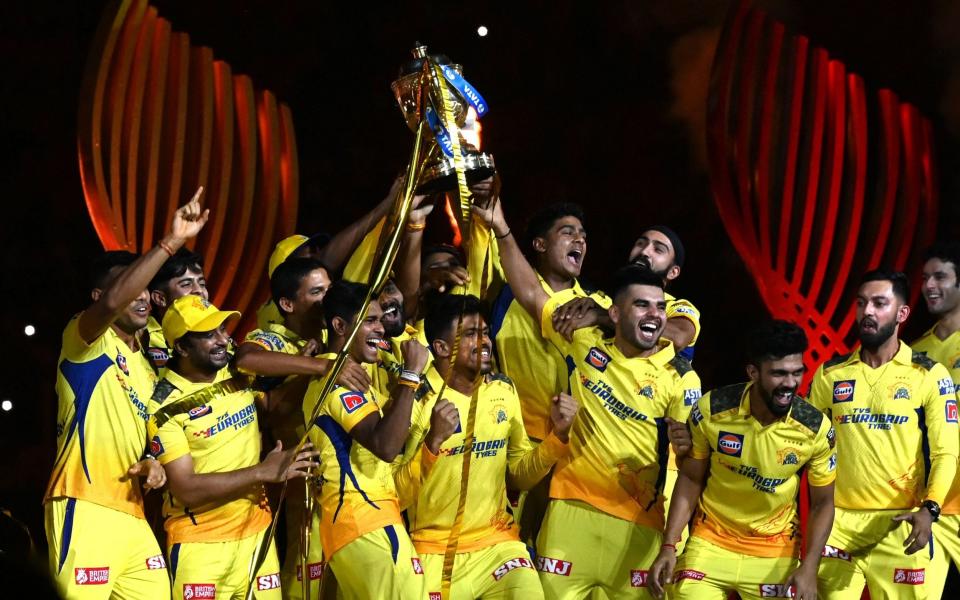Silicon Valley investors expect cricket to finally crack America

Officially, it is called Major League Cricket; a more apt name, perhaps, would be the American IPL. Most of the owners are the same with four of the six sides having Indian Premier League owners.
Major League Cricket is a competition whose impact will be felt across the pond, as England have already learned with Jason Roy signing and Moeen Ali being approached too.
Per-game, it is already among the five best-paying leagues in the world; the salary cap per side, £930,000, is only just below the Hundred’s £1m, even though Major League Cricket has one-third fewer games.
On July 13 in Grand Prairie, Texas, Major League Cricket will begin its first season. Professional cricket in the US has long existed more as International Cricket Council fantasy than reality. But, after a series of mooted leagues have collapsed at inception, this time is different. Over 40 international players have been lured to the US for the tournament – Quinton de Kock, Anrich Nortje and Roy have already been signed, with Trent Boult and Sunil Narine expected to be announced soon. About £100 million has already been pledged in spending for the league, with over half of this already invested.

Much of this has come from some of the most-prominent figures in Silicon Valley, including Satya Nadella, the chief executive of Microsoft who is an investor in Major League Cricket and also a co-owner of the Seattle Orcas.
“He’s a cricket fan and passionate about it,” says Tom Dunmore, the vice president of marketing at Major League Cricket. “It’s a great fit to have him as an investor-partner.”
Nadella, who initially moved from India to the US to study computer science, embodies the importance of the South Asian diaspora for Major League Cricket. All six teams have either IPL owners or some ownership from businessmen born in India. The South Asian diaspora are also central to Major League Cricket’s belief that the competition will have a sizeable audience. The US now has 4.6 million people classed as Indian American, up from 1.9 million in 2000; two-thirds of these were born in India.
This group tend to be highly educated and, often, very wealthy too. The median household income of Indian-Americans is double the national average, making accessing the group hugely attractive for advertisers. If demographics are destiny, then demographics might now be on cricket’s side in the US. “That’s changed the sport really in the US over the last couple of decades – immigration from South Asia, and other places,” Dunmore says. “It’s built a much larger support for the game.”
Whenever there is talk of cricket in the US, it tends to provoke guffaws at the notion of cricket usurping baseball as the nation’s summer outdoor game. But the size and wealth of the country is such that cricket does not need to usurp baseball as America’s bat-and-ball game of choice for the US to be a significant part of the sport’s global landscape. Indeed, even without Major League cricket, it already is a force with the US thought to be the fifth most lucrative broadcasting market for the International Cricket Council’s global events like the World Cup.
This year’s tournament will only run for 18 days, with the six teams playing all their matches in Dallas and another venue expected to be in North Carolina. All six teams are developing stadiums - generally with planned capacities around 10,000 - that will enable the competition to run a home-and-away format. This will entail the tournament expanding from 19 games to around 34; next summer is already planned to include more games than this year.
Ultimately, Major League hopes to develop beyond the existing six teams. “In the long run, there’s room for expansion,” Dunmore says. “There are great cities with massive cricket-loving populations that don’t have teams, but we want to do it carefully - build the league first.”
Conflict with the rest of the global calendar, already saturated, is inevitable. Being played in the northern hemisphere summer means that Major League Cricket’s competition is less fierce than for other new leagues; four major T20 leagues were played in tandem in January. While Major League Cricket hopes to minimise - or ideally completely avoid - a clash with the Hundred, an enlarged competition will heighten the difficulties for the T20 Blast in signing the best international players.
Yet, for all the focus on Major League Cricket, as important is what lies underneath. Most cricket ventures in North America like the India-Pakistan ODIs in Toronto in the 1990s, or the Cricket All-Stars matches between teams captained by Sachin Tendulkar and Shane Warne in 2015 – have focused on monetising the market that already exists.

Through Minor League Cricket, a development league with 26 teams that launched in 2021, Major League Cricket is trying to build the sport’s infrastructure in the US. It is an onerous challenge: governance in US cricket is so chaotic that one insider likens it to “the Wild West”. The country has a crippling shortage of reasonable quality facilities: there are only thought to be 10 turf wickets in the US. Under seven weeks out from the first ball in Major League Cricket, a home broadcaster has yet to be confirmed.
And so, investors need to be sure of one thing: profits, if they come, will not be swift. While this is true of all new sports leagues - even the IPL took until 2018 for all franchises to reliably make money - the uncertainties are greater in the US. But so, perhaps, are the possibilities, especially with the US co-hosting the T20 World Cup next year and growing optimism that cricket will feature in the Los Angeles Olympic Games in 2028.
In many ways, there is an essential irony to the US’s attempts to mimic the IPL. Lalit Modi, the IPL co-founder, modelled the competition on US sports leagues. Just like US leagues, the IPL was set-up with a salary cap to ensure relative equality between teams and maintain competitive balance, and has no promotion and relegation - pleasing owners, who loathe the uncertainty. And, just like US leagues, the IPL was designed as a fusion of sport and entertainment. Essentially, the IPL marked the Americanification of Indian cricket. Now, the circle is almost complete: the US is trying to learn from the IPL.


 Yahoo Sport
Yahoo Sport 




































































